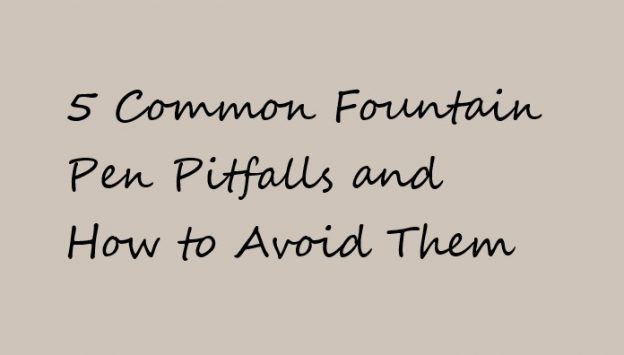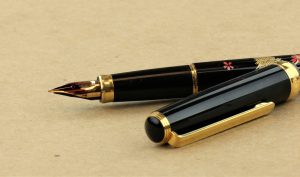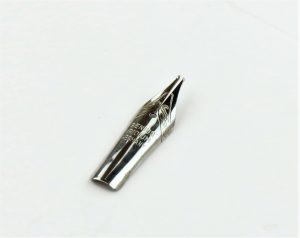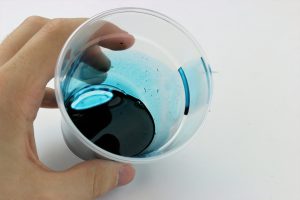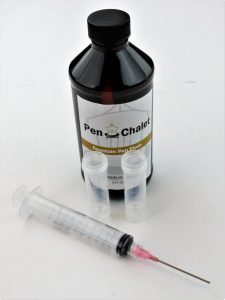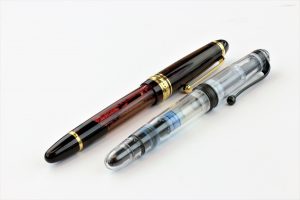So, you just started out in your new hobby. Who knew that there was an entire world and community based solely around pens? As you are perusing Pen Chalet, you start wondering to yourself, “These fountain pens are an investment. Are there any fountain pen pitfalls that I need to look out for?” Fortunately for you, we have just what you’re looking for! Here are 5 common fountain pen pitfalls and how to avoid them!
Fountain Pen Pitfalls: #1 Not Cleaning your Fountain Pen
Unlike most ballpoint pens, fountain pens, require a little maintenance. One of the most common maintenance requirements is a simple cleaning. Not cleaning your fountain pen can lead to the ink drying in the feed and causing clogs. Although this may seem rather serious, it is simple to fix and simple to prevent. If you’ve not cleaned out your fountain pen, simply take a bulb syringe and flush water through it until the water comes out clear. If you’re unsure how to clean out your fountain pen, check out our How to Clean a Cartridge/Converter Fountain Pen video.
Fountain Pen Pitfalls: #2 Writing With Too Much Pressure
One of the great benefits of using a fountain pen, is that they require little to no pressure to write. In fact, writing with too much pressure can cause a nib to look like this poor fellow pictured to our right. If you write with too much pressure, you can bend the tines out of position, or even “spring” the nib. A “sprung” nib is one that has been lifted off of the feed due to a bend in the main body of the nib. Do note, however, that it requires a decent amount of force to cause this amount of damage to a nib. If you are concerned that you may be writing with too much pressure, practice writing with a mechanical pencil with .4 (or smaller) lead until you are confident that you won’t break the lead.
Fountain Pen Pitfalls: #3 Using the Wrong Inks
Likely the most intriguing part of the fountain pen hobby is not the pen, but instead the hundreds of inks that you can use. You may be tempted while you are at your local craft or hobby store, to pick up a bottle of some cheap ink. Make sure that you read the labels as there are many inks which are not intended for fountain pens. Some inks, including India Inks, Calligraphy Inks, and others, are made solely to be used by dip pens. These inks are very harmful for fountain pens, and are not designed to flow through a feed. We have seen far too many clogged, melted, and permanently stained fountain pens. Always read the label, and stay with inks specifically designed for use in fountain pens.
Fountain Pen Pitfalls: #4 Using the Wrong Cleaning Solution
Sometimes you have to use something a little stronger than water to get your pens clean. It is very important to know what cleaning solution to use, and when to use it. Never use rubbing alcohol to clean any part of your fountain pens. Rubbing alcohol is a harsh chemical that can eat at, and ruin, your delicate fountain pens. If you need to clean out some tough stains use a small amount of Pen Flush. You can soak your pens, feeds, and nibs in pen flush, however we do not advise to do so for very long. If you want to soak your pens overnight, it is best to soak them in water overnight, or water with a few drops of dish soap. Beware of ammonia with aluminium pens. Ammonia reacts chemically with aluminium, and will cause damage to your aluminium pens. Most pen flush uses ammonia as a main ingredient, so be sure to read the ingredients carefully. For aluminium pens, we advise to remove the nib and feed for cleaning. Otherwise, use only water with a few drops of dish soap while cleaning your aluminium pens.
Fountain Pen Pitfalls: #5 Not Using Your Fountain Pens
All fountain pens are functioning works of art. They are the extension of your thoughts to the page. It is a great tragedy to see these works of art sit unused in a desk, on a shelf, or in a box. If you leave ink in your fountain pen and don’t use your it for awhile, it will likely have issues with hard starting. Ink will dry up on the nib or in the feed, and will have trouble flowing. There are many great methods you can use to keep your pens in use and flowing. One such method, is to create a daily rotation of pens. Each day use a different pen, or set of pens, then the day before. Another method is to take up a hobby such as keeping a journal, that encourages more fountain pen use. Also, it’s always a good idea to never have more pens inked than you can keep in a regular rotation.
Fountain pens are great writing instruments that allow writers to use a variety of inks as well as writing tip sizes that cannot be accomplished with other types of pens. Once you understand a few simple things to care for them, they will last a lifetime and bring hours of enjoyment to the writer.
Buy Fountain Pen Ink
Buy Rollerball Pens
Fountain Pen Converters
Pen Brands
Giuliano Mazzuoli Writing Instruments
Krishna Ink Company
Colorverse Ink Company



